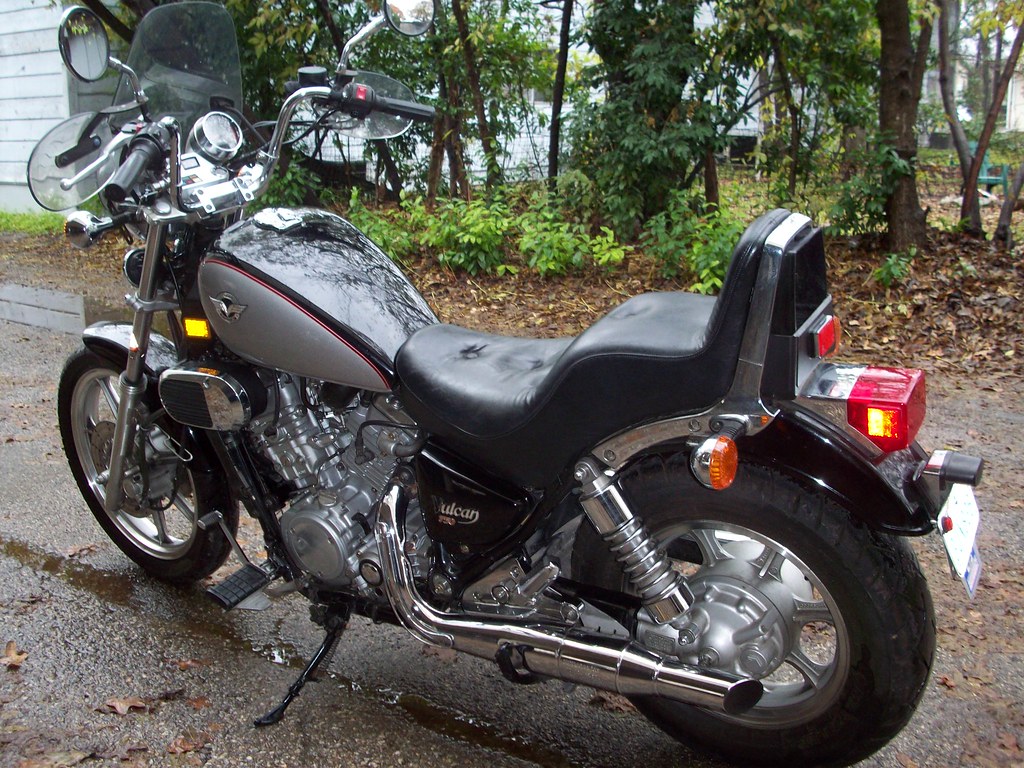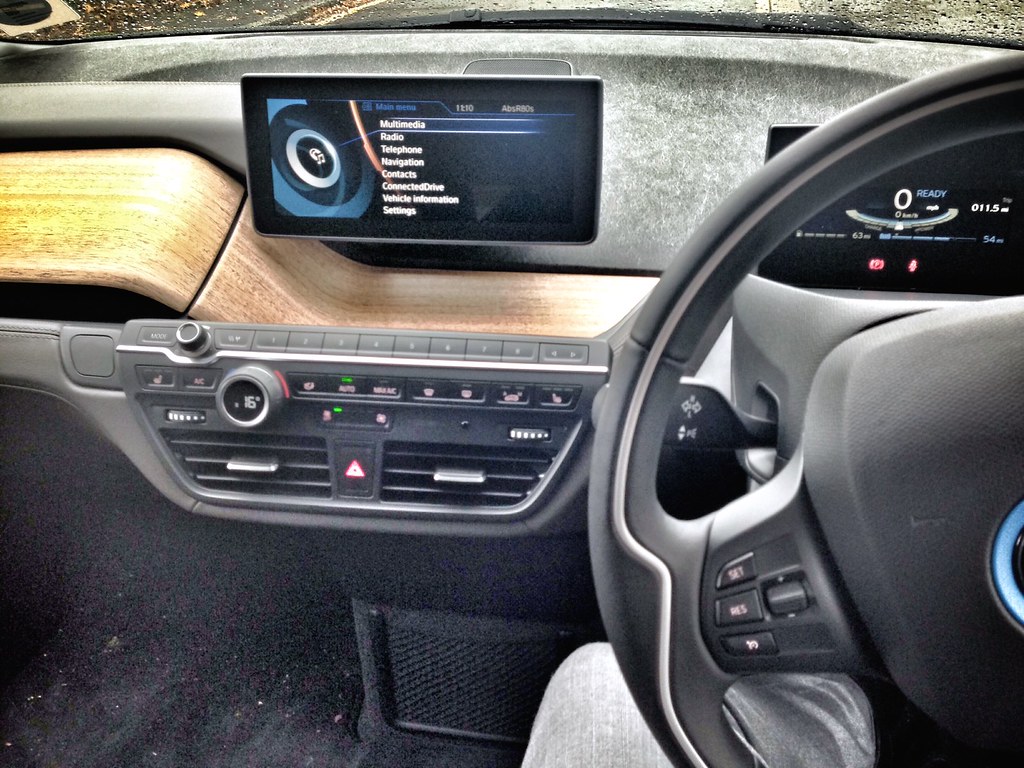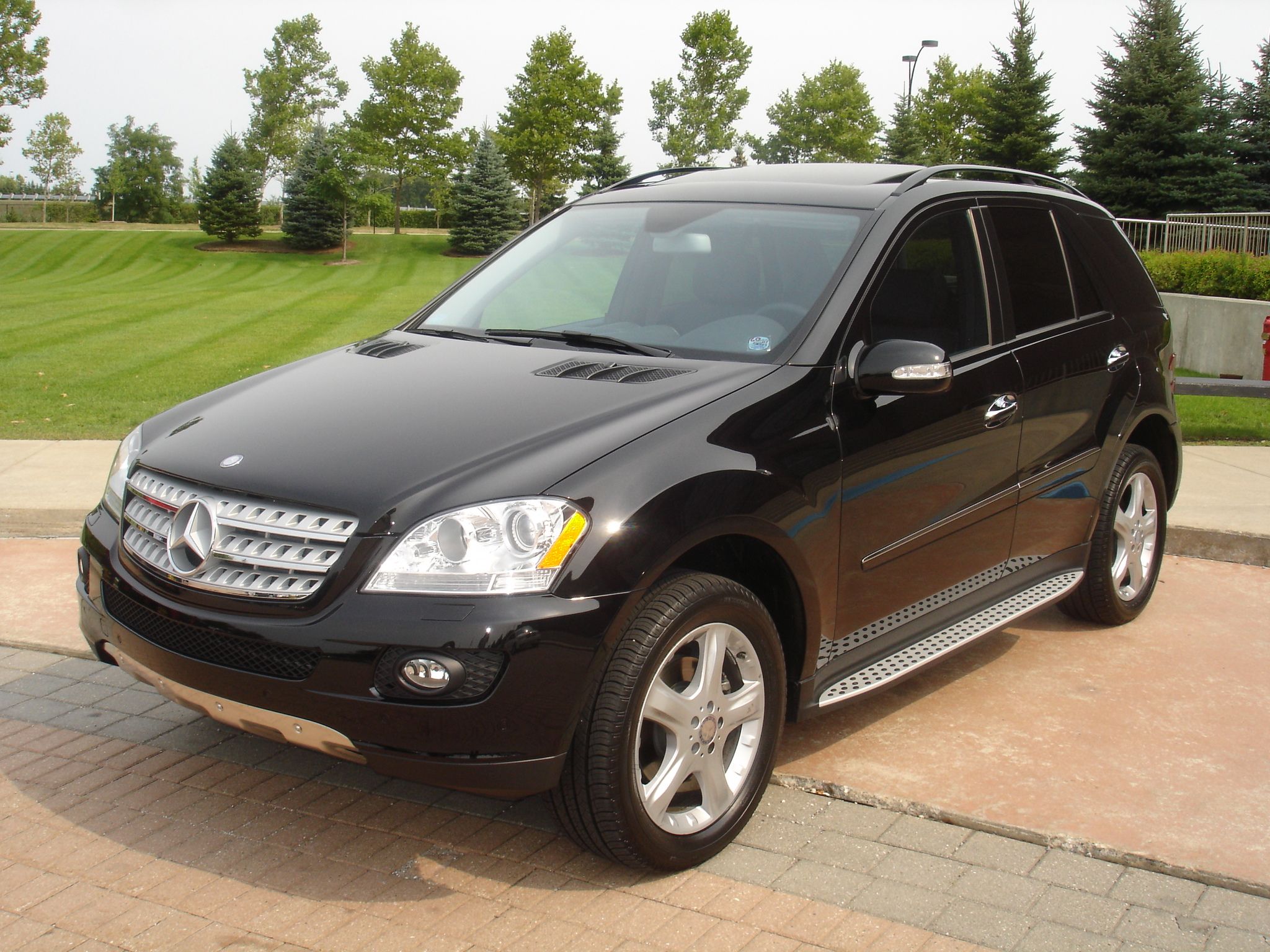
Few automakers have left as indelible a mark on the global automotive landscape as Mercedes-Benz. For well over a century, this venerable brand has stood as a towering symbol of innovation, performance, luxury, and cutting-edge technology. Through its unwavering commitment to pioneering engineering and timeless design, Mercedes-Benz has consistently shaped the industry, producing vehicles that transcend mere transportation to become cultural icons and undeniable benchmarks of automotive excellence across the globe.
Indeed, Mercedes-Benz’s history is a compelling narrative of continuous advancement, from the very first car to the sophisticated machines that grace our roads today. The company’s brilliant engineers have consistently pushed the boundaries of what’s possible, whether by integrating groundbreaking safety features into mass-market models or by meticulously crafting engines that blend prodigious power with unparalleled refinement and efficiency. This relentless pursuit of perfection, prioritizing robust construction and long-term reliability, has cemented Mercedes-Benz’s position as a quintessential car manufacturer, often surpassing its contemporaries in quality, prestige, and forward-thinking design.
In this in-depth exploration, we embark on an exhilarating journey through the storied archives of Mercedes-Benz, revisiting twelve of its most successful and profoundly influential models. These are the vehicles that not only achieved remarkable sales figures or secured racing triumphs but also fundamentally redefined what was achievable in automotive engineering. They set new and enduring standards for luxury, performance, and durability that continue to resonate and inspire across generations of drivers and enthusiasts alike. Let’s dive into the fascinating stories behind these true automotive legends and their lasting legacy.
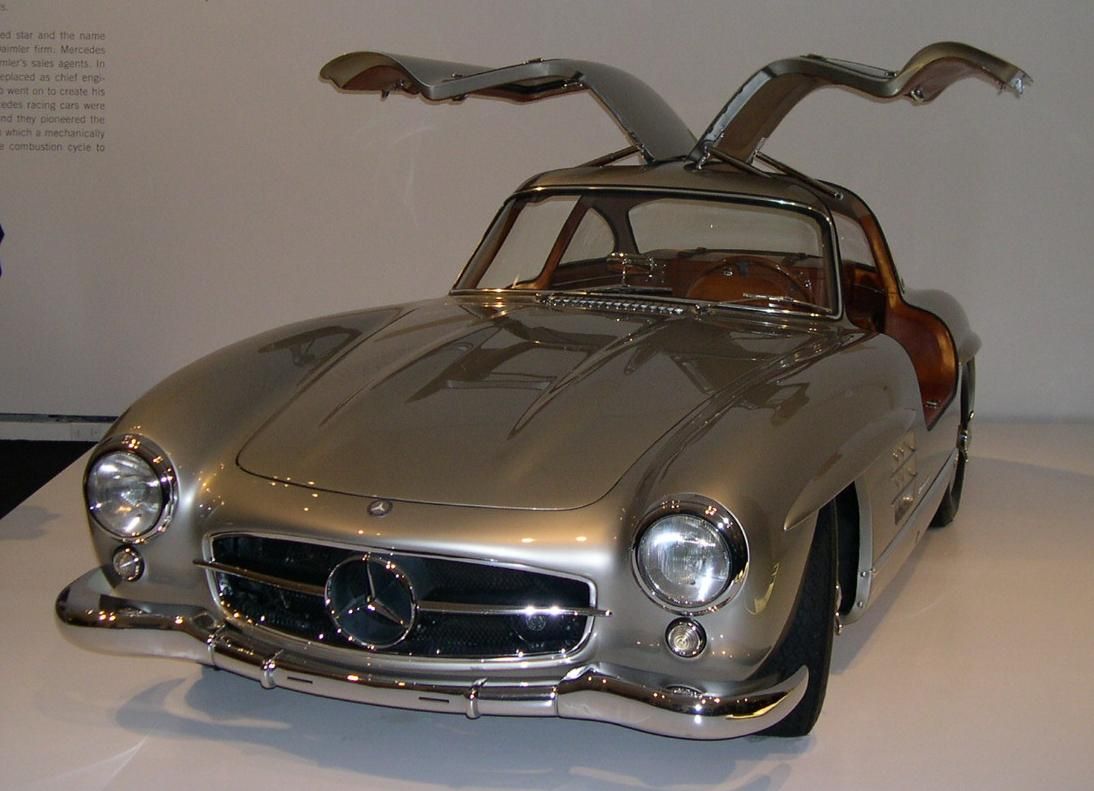
1. **Mercedes-Benz 300 SL “Gullwing” (1954–1957)**Often celebrated as the most breathtaking Mercedes-Benz ever conceived, the 300 SL Gullwing instantly set a new paradigm for 1950s sports car performance and design. Its distinctive upward-opening “gullwing” doors were not merely a stylistic flourish; they were a direct consequence of the car’s innovative tubular spaceframe chassis, a structural necessity that, against all odds, became its most iconic visual signature. This compelling blend of audacious form following absolute function resulted in a design masterpiece that continues to captivate enthusiasts and discerning collectors worldwide, fetching millions at prestigious auctions.
Beneath its exquisite exterior lay a technical marvel, truly pushing the envelope of automotive engineering for its era. The 300 SL was powered by a 3.0-liter straight-six engine with groundbreaking mechanical fuel injection—a first for a production car—adapted from aircraft technology. This advanced powerplant unleashed an impressive 215 horsepower, enabling the Gullwing to achieve a remarkable top speed exceeding 250 km/h (160 mph), making it unequivocally the fastest production car of its time. Such unprecedented performance, combined with its meticulous construction predominantly from lightweight aluminum, cemented Mercedes-Benz as a formidable and innovative force in high-performance automotive circles, establishing its legacy as both a technological marvel and a design icon.
Car Model Information: 2022 Mitsubishi Outlander SE
Name: Mercedes-Benz 300 SL
Caption: 300 SL roadster and gullwinged coupé
Manufacturer: Mercedes-Benz
Production: Mercedes-Benz 300 SLR#Uhlenhaut Coupé
Assembly: Stuttgart
Designer: Friedrich Geiger
Class: Sports car,Grand tourer
BodyStyle: coupé,Roadster (automobile)
Platform: Coupé W198 I, Roadster W198 II
Related: Mercedes-Benz 190 SL
Layout: FR layout
Engine: 2996 cc
Abbr: off
Transmission: Manual transmission
Wheelbase: 2400 mm
Length: 4520 mm
Width: 1790 mm
Height: 1300 mm
Weight: 1500 kg
Predecessor: Mercedes-Benz W194
Successor: Mercedes-Benz W113
Doors: Gull-wing door
Categories: 1960s cars, 24 Hours of Le Mans race cars, All Wikipedia articles needing clarification, All Wikipedia articles written in American English, All articles with vague or ambiguous time
Summary: The Mercedes-Benz 300 SL (chassis code W 198) is a two-seat sports car that was produced by Mercedes-Benz from 1954 to 1957 as a gullwinged coupé and from 1957 to 1963 as a roadster. The 300 SL traces its origins to the company’s 1952 racing car, the W194, and was equipped with a mechanical direct fuel-injection system that significantly increased the power output of its three-liter overhead camshaft straight-six engine.
The 300 SL was capable of reaching speeds of up to 260 km/h (162 mph), earning it a reputation as a sports car racing champion and making it the fastest production car of its time. The car’s iconic gullwing doors and innovative lightweight tubular-frame construction contributed to its status as a groundbreaking and highly influential automobile.
The designation “SL” is an abbreviation of the German term super-leicht, meaning “super-light”, a reference to the car’s racing-bred lightweight construction. The 300 SL was introduced to the American market at the suggestion of Max Hoffman, Mercedes-Benz’s United States importer at the time, who recognized the potential demand for a high-performance sports car among American buyers. The Mercedes-Benz 300 SL remains a highly sought-after classic car and is celebrated for its performance, design, and technological advancements.
Get more information about: Mercedes-Benz 300 SL
Buying a high-performing used car >>>
Brand: Mercedes-Benz Model: 300 SL
Price: $18,409 Mileage: 57,702 mi.
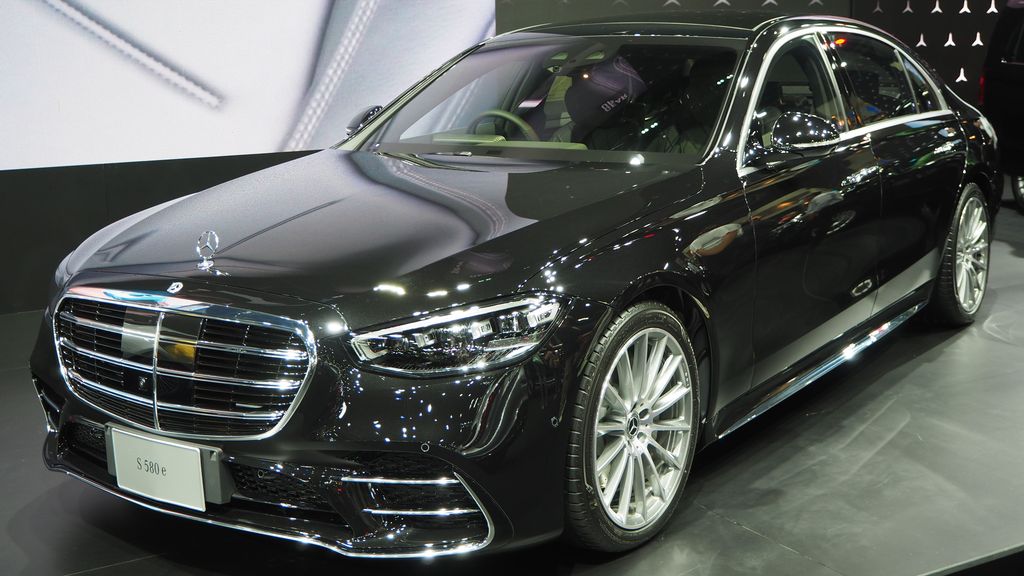
2. **Mercedes-Benz S-Class (W116, W126, W140, etc.)**The Mercedes-Benz S-Class, a designation officially bestowed in 1972 with the W116, has consistently defined the absolute pinnacle of luxury sedans, serving as a relentless and forward-thinking showcase of automotive innovation. Across its numerous and highly influential generations, this flagship model has not merely kept pace with industry advancements but has actively pioneered them, solidifying its formidable reputation as the ultimate benchmark for executive comfort, sophisticated technology, and impeccable build quality. Its successive iterations have consistently set new and often revolutionary standards for the entire automotive world.
Consider the immensely successful W126 series, which famously introduced Anti-lock Braking Systems (ABS) and airbags to the mainstream market, fundamentally transforming automotive safety for millions. The W140 further elevated the standard with features like double-glazed windows and soft-close doors, exemplifying an unwavering commitment to refinement. The S-Class journey, from the W116 that notably surpassed rivals like the Rolls-Royce Silver Shadow, to the latest W223, highlights a continuous stream of industry-leading features such as ESP, adaptive cruise control, Night Vision Assist, and Magic Body Control, ensuring its status at the zenith of luxury and technological prowess.
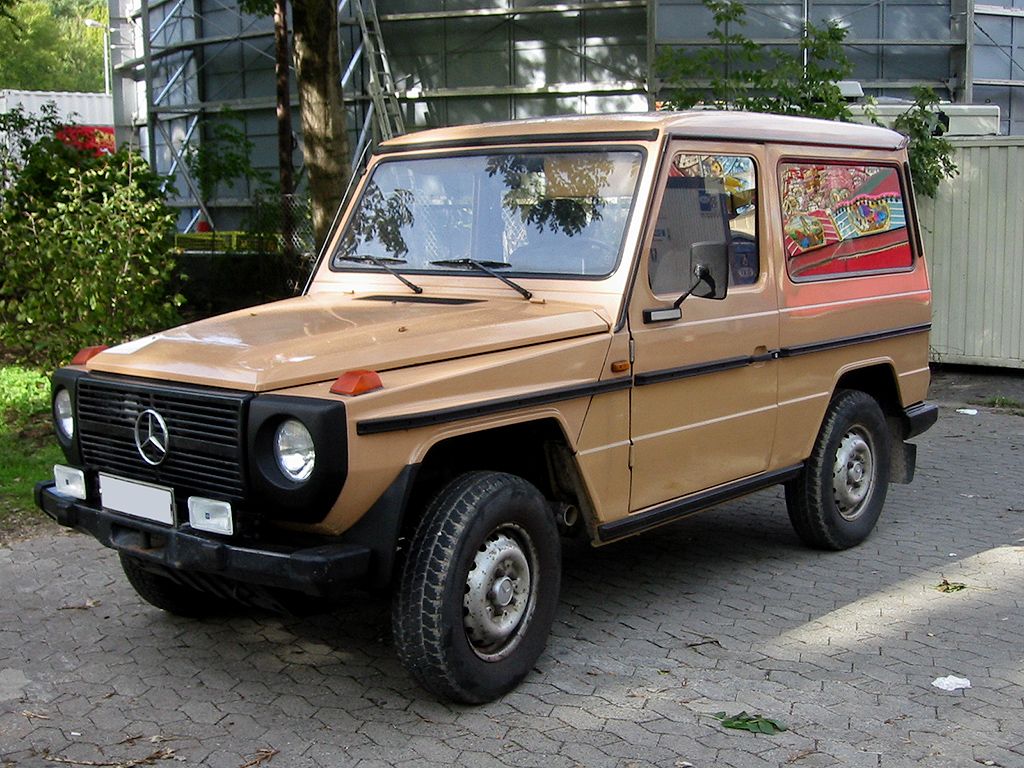
3. **Mercedes-Benz G-Class (1979–present)**What began its life as a robust and unpretentious military vehicle, the G-Class—affectionately and globally known as the “G-Wagon”—has undergone a truly remarkable transformation, evolving into a definitive and instantly recognizable symbol of rugged luxury. Its iconic, boxy silhouette has remained largely unchanged since its inception, a testament to its enduring design philosophy that prioritizes unparalleled go-anywhere capability and unyielding durability. This unique, potent blend of utilitarian roots and opulent appeal has allowed the G-Class to carve out a singular, unassailable niche in the automotive landscape.
The G-Class’s formidable capabilities stem directly from its highly engineered body-on-frame construction, rigid axles, and impressive high ground clearance, features that collectively make it virtually unstoppable across challenging terrains. Early models, like the W460 series introduced in 1979, became renowned for mechanical simplicity and extraordinary durability, excelling from African deserts to Siberian tundras. Despite initially spartan interiors, the G-Class adapted to market demands, introducing opulent cabins and high-performance AMG versions. These AMG models created an unparalleled fusion of extreme off-road performance and commanding urban presence, showcasing its versatility and lasting success.
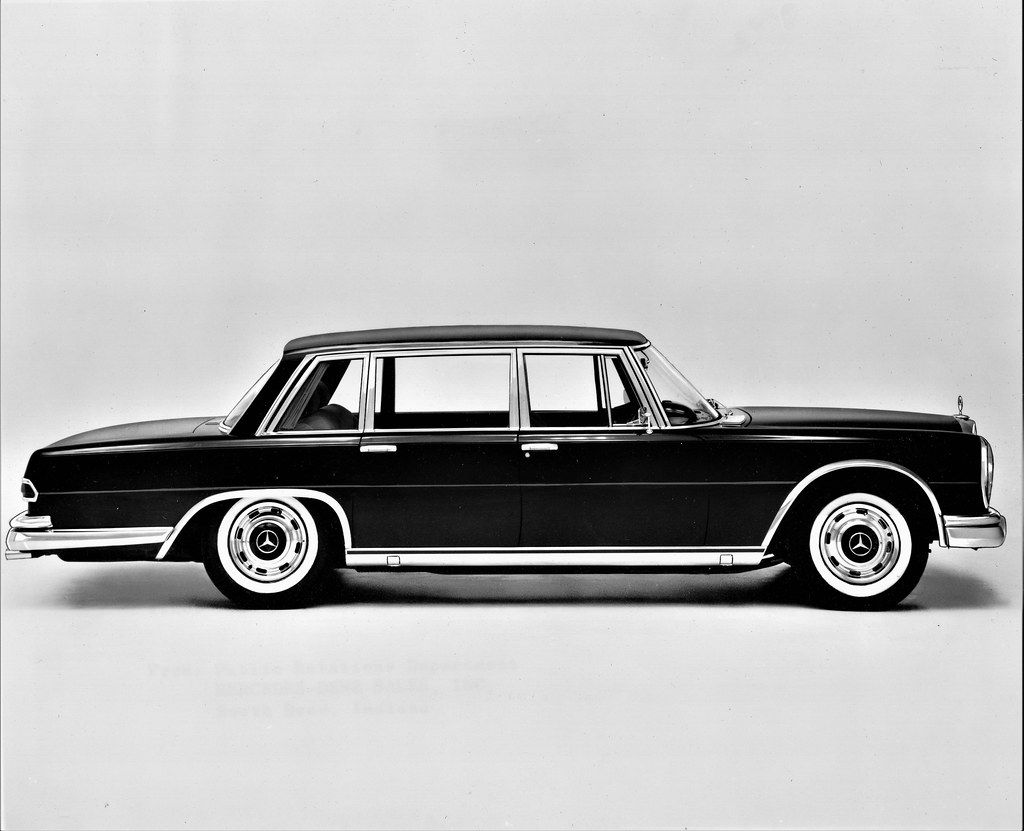
4. **Mercedes-Benz 600 (W100, 1963–1981)**The Mercedes-Benz 600, reverentially known as the “Grosser Mercedes,” stood as the undisputed pinnacle of automotive luxury and engineering excellence during its impressive production run from 1963 to 1981. This wasn’t merely a car; it was a grand, unmistakable statement of power, unparalleled opulence, and technological leadership, meticulously designed exclusively for heads of state, royalty, and the global elite. Its extraordinary engineering and commanding road presence instantly made it the most expensive production car of its era, embodying an unmatched level of prestige.
Propelling this magnificent machine was a massive 6.3-liter V8 engine, producing a formidable 250 horsepower. However, the true marvel of the 600 resided in its incredibly complex yet ingeniously integrated high-pressure hydraulic system. This groundbreaking system powered virtually every mechanical comfort function imaginable, from windows and adjustable seats to the trunk lid and doors, providing smooth, near-silent operation that was decades ahead of its time. Each 600 was a masterpiece of German engineering, famously requiring approximately 2,800 hours of labor to produce, ensuring unparalleled quality and durability for figures like Elvis Presley and John Lennon.
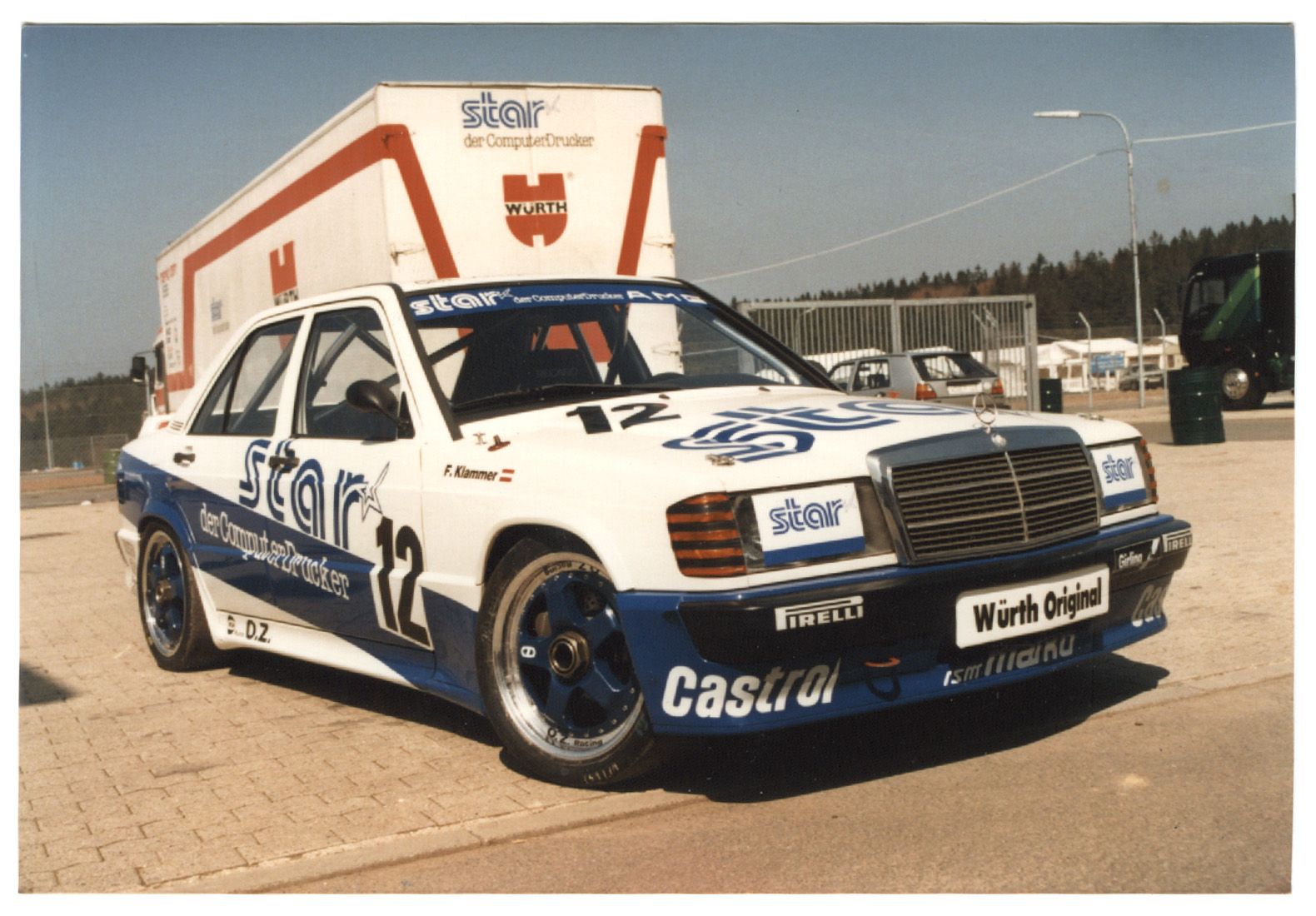
5. **Mercedes-Benz 190E 2.3-16 (W201, 1984–1988)**The Mercedes-Benz 190E 2.3-16 marked a truly pivotal moment in the brand’s performance aspirations, serving as Mercedes’ direct and formidable answer to established rivals like the BMW M3. This homologation special, an integral part of the W201 series, signified a turning point, ushering in an exciting new era where Mercedes-Benz actively pursued a more compact, sporty sedan with genuine, high-caliber performance credentials. It established the foundational genesis for the small, dynamic Mercedes sedan that would later brilliantly evolve into the hugely successful C-Class lineup.
Developed with crucial input from the legendary engine specialists at Cosworth, the 2.3-liter four-cylinder engine nestled within the 190E 2.3-16 was a marvel of precise engineering for its time. Featuring twin cams and meticulously engineered for high-revving excitement, it produced a spirited 183 horsepower. This sophisticated powerplant, combined with the car’s expertly balanced chassis and remarkably precise handling, delivered an immensely engaging and highly competitive driving experience. Its debut class win at the prestigious Nürburgring, notably outpacing a field that included Ayrton Senna, firmly cemented the 190E’s place in history as a performance icon.
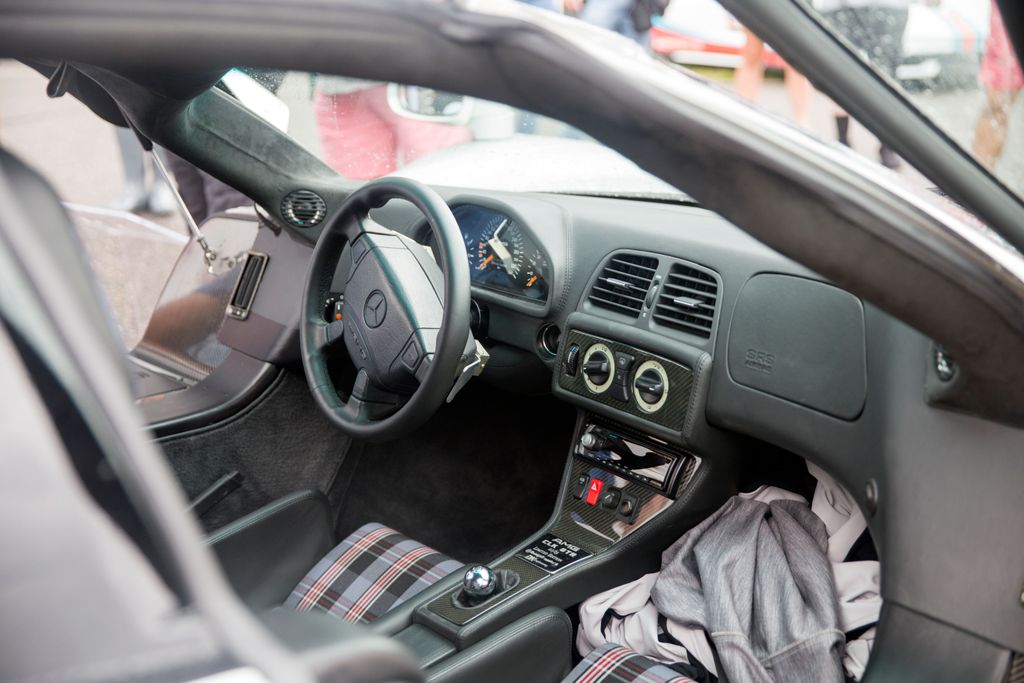
6. **Mercedes-Benz CLK GTR (1998–1999)**Among the most extreme, audacious, and profoundly exclusive road cars ever conceived by Mercedes-Benz, the CLK GTR stands as an unforgettable and outrageous testament to the brand’s unyielding motorsport heritage. This formidable machine was purpose-built meticulously for FIA GT1 homologation, essentially a full-blooded race car barely disguised for public roads, breathtakingly blurring the lines between elite competition and street legality. Its very existence underlined Mercedes-AMG’s bold and audacious approach to performance engineering at its absolute zenith.
With an astronomical price tag often north of $1 million USD, the CLK GTR was an extreme rarity, with only 25 road-going versions ever meticulously produced. At its very heart lay a mid-mounted 6.9-liter V12 engine, a masterpiece of power and precision, meticulously tuned to produce a colossal 604 horsepower. This incredible output allowed the CLK GTR to achieve breathtaking acceleration, sprinting from 0 to 100 km/h in just over 3 seconds—a staggering figure that remains profoundly impressive even by today’s hypercar standards. It represents a fascinating chapter in Mercedes-Benz history, showcasing the brand’s willingness to create unadulterated racing machines for the most discerning enthusiasts.
Car Model Information: 2022 Mitsubishi Outlander SE
Name: Mercedes-Benz CLK GTR
Caption: Goodwood Festival of Speed
Category: Group GT1
Constructor: Mercedes-Benz
Designer: Gerhard Ungar
Team: Mercedes-AMG,Persson Motorsport
Drivers: Collapsible list
Title: List of drivers
Chassis: Carbon fibre
Suspension: Double wishbone suspension
Wheelbase: cvt
Length: cvt
Width: cvt
Height: cvt
Weight: cvt
Track: cvt
EngineName: Mercedes-Benz,Mercedes-Benz M120 engine#Larger displacement M120s
Capacity: 5987 cc
Abbr: on
Configuration: V12 engine
EnginePosition: Mid-engine design
Gears: 6-speed
Type: Sequential manual transmission
Clutch: Four-plate carbon fibre
Brakes: Carbon-composite
Fuel: Mobil
Lubricants: Mobil 1
Tyres: Bridgestone
Successor: Mercedes-Benz CLK LM
Debut: 1997 FIA GT Hockenheim 4 Hours
FirstWin: 1997 Suzuka 1000 km
LastWin: 1998 FIA GT Silverstone 500 km
LastEvent: 1998 FIA GT Laguna Seca 500 km
Races: 13
Wins: 8
Poles: 8
FastestLaps: 7
TeamsChamp: 1997 FIA GT Championship season,1998 FIA GT Championship season
DriversChamp: 1997 FIA GT Championship season,1998 FIA GT Championship season
Categories: Articles with short description, CS1 Chinese-language sources (zh), CS1 Dutch-language sources (nl), CS1 German-language sources (de), Cars introduced in 1997
Summary: The Mercedes-Benz CLK GTR (chassis code C297) is a GT1 sports car built and produced by Mercedes-Benz in conjunction with their then motorsport partner AMG. Intended for racing in the new FIA GT Championship series in 1997, the CLK GTR was designed primarily as a race car. As such, the production of road cars necessary in order to meet homologation standards of GT1 was a secondary consideration in the car’s design, i.e. the CLK GTR was a homologation special.
After its successful campaign in the 1997 FIA GT Championship, the car was also entered in the first two rounds of the 1998 FIA GT Championship and won both of these rounds before being replaced for the 1998 24 Hours of Le Mans. Its successor, the 1998 Mercedes-Benz CLK LM, concluded Mercedes’ GT1 program. For 1999, Mercedes introduced the Mercedes-Benz CLR, a sports car built to the Le Mans Grand Touring Prototype (LMGTP) regulations. This sports car was a purpose-built racecar that did not have to abide by the homologation rules of the previous GT1 cars.
Get more information about: Mercedes-Benz CLK GTR
Buying a high-performing used car >>>
Brand: Mercedes-Benz Model: CLK GTR
Price: $18,409 Mileage: 57,702 mi.
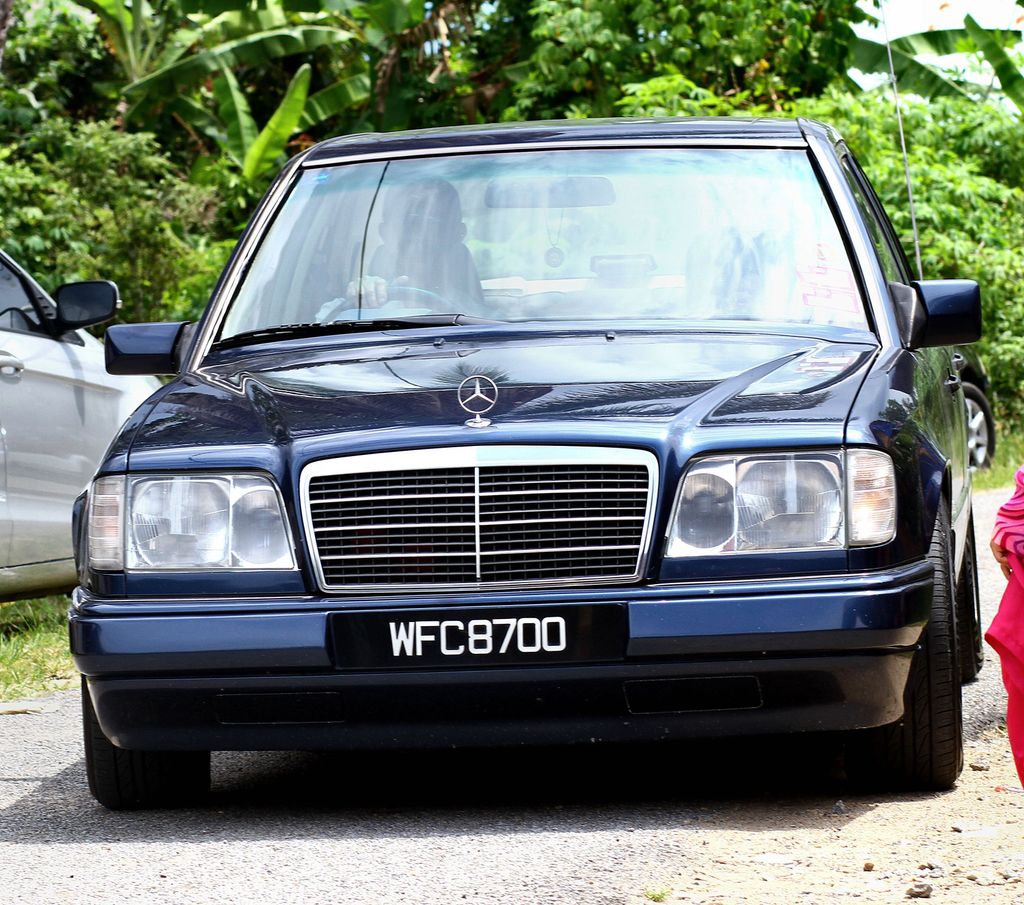
7. **Mercedes-Benz W124 E-Class (1985–1996)**This iconic vehicle, though only officially named the E-Class in 1993, served as Mercedes-Benz’s definitive executive sedan throughout the late 1980s and mid-1990s. The W124 series quickly garnered a formidable reputation for its extraordinary engineering excellence and unwavering longevity, attributes that indelibly shaped Mercedes-Benz’s public image for an entire generation. It wasn’t just a car; it was a global workhorse, equally at home as a robust taxi in the demanding streets of Germany or a sophisticated family sedan on highways worldwide, a testament to its unparalleled versatility and rock-solid construction that simply refused to quit.
The W124’s enduring success stemmed from its visionary design, meticulously balancing an aerodynamic body with a sturdy, yet remarkably lightweight, steel construction. This thoughtful combination ensured impressive fuel efficiency for an executive-class vehicle of its era, a critical advantage in a changing automotive landscape. Furthermore, its wide array of robust petrol and diesel engine options catered with precision to a diverse global market, providing ample power and renowned reliability. From its very inception, the W124 was conceived with durability and an almost legendary reliability as paramount, famously setting benchmarks in sheer build quality that few, if any, rivals could even hope to match.
Beyond its core strengths, the W124 also birthed legends like the ultra-performance 500E, a truly discrete powerhouse co-developed in a clandestine partnership with Porsche, featuring a potent 5.0-liter V8 engine tucked neatly into its executive package. This particular variant underscored the W124’s remarkable adaptability and engineering prowess, proving unequivocally that beneath its understated elegance lay the heart of a true, high-caliber performance machine. The W124 E-Class remains, to this day, a highly cherished example of automotive perfection, celebrated by enthusiasts worldwide for its timeless aesthetic appeal, astonishing mechanical resilience, and the sheer quality that defined an era.
Car Model Information: 2022 Mitsubishi Outlander SE
Name: Mercedes-Benz E-Class
Manufacturer: ubl
Production: 1953–present (E-Class nomenclature adopted since 1993)
Class: Executive car
Layout: Front-engine, rear-wheel-drive
Predecessor: Mercedes-Benz W124
Categories: 1960s cars, 1970s cars, 1980s cars, 1990s cars, 2000s cars
Summary: The Mercedes-Benz E-Class is a range of executive cars manufactured by German automaker Mercedes-Benz in various engine and body configurations. Produced since September 1953, the E-Class falls as a midrange in the Mercedes line-up, and has been marketed worldwide across five generations.
Before 1993, the E suffix in Mercedes-Benz model names referred to Einspritzmotor (German for fuel injection engine) when in the early 1960s fuel injection began to proliferate beyond its upper-tier luxury and sporting models. By the launch of the facelifted W124 in 1993 fuel injection was ubiquitous in Mercedes engines, and the E was adopted as a prefix (i.e., E 220). The model line is referred to officially as the E-Class (or E-Klasse). All generations of the E-Class have offered either rear-wheel drive or Mercedes’ 4Matic four-wheel drive system.
The E-Class is Mercedes-Benz’ best-selling model, with more than 13 million sold by 2015. The first E-Class series was originally available as four-door sedan, five-door station wagon, two-door coupe and two-door convertible. From 1997 to 2009, the equivalent coupe and convertible were sold under the Mercedes-Benz CLK-Class nameplate; which was based on the mechanical underpinnings of the smaller C-Class while borrowing the styling and some powertrains from the E-Class, a trend continued with the C207 E-Class coupe/convertible which was sold parallel to the W212 E-Class sedan/wagon. With the latest incarnation of the E-Class released for the 2017 model year, all body styles share the same W213 platform.
Due to the E-Class’s size and durability, it has filled many market segments, from personal cars to frequently serving as taxis in European countries, as well special-purpose vehicles (e.g., police or ambulance modifications) from the factory. In November 2020, the W213 E-Class was awarded the 2021 Motor Trend Car of the Year award, a first for Mercedes-Benz.
Get more information about: Mercedes-Benz E-Class
Buying a high-performing used car >>>
Brand: Mercedes-Benz Model: W124 E-Class
Price: $18,409 Mileage: 57,702 mi.
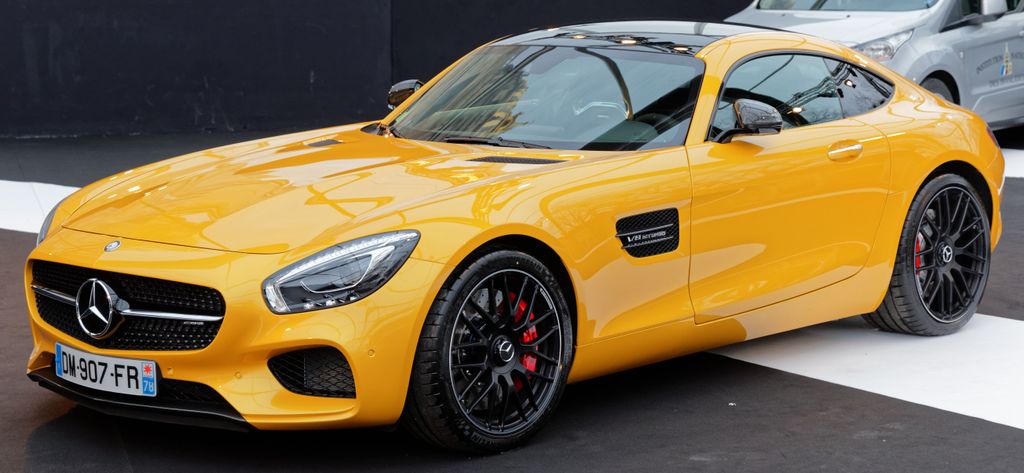
8. **Mercedes-Benz AMG GT (2015–present)**Following in the prestigious and somewhat audacious footsteps of the SLS AMG, the Mercedes-Benz AMG GT burst onto the scene with a roar, proudly proclaiming itself as the first truly bespoke AMG-developed sports car, meticulously designed from the ground up to dominate the modern performance coupe segment. This spectacular machine was engineered with a singular, unyielding vision: to deliver an exhilarating, no-compromise blend of genuine supercar performance coupled with the refined versatility of a grand tourer. Its aggressive, purposeful styling immediately announced its formidable intentions, directly challenging established, revered rivals like the iconic Porsche 911 with a fresh, potent, and unequivocally Mercedes-AMG perspective.
At the very core of the AMG GT’s formidable capabilities lies a handcrafted 4.0-liter twin-turbo V8 engine, a marvel of modern, precision engineering that not only produces blistering speed but also a deeply soul-stirring, guttural soundtrack that captivates every sense. Mercedes-AMG’s almost obsessive attention to detail is profoundly evident in its near-perfect 47:53 weight distribution, a critical and meticulously calibrated factor in achieving its renowned agile handling and exquisitely balanced driving dynamics. This precise configuration ensures that whether carving apexes on a demanding race track or effortlessly cruising a scenic coastal route, the AMG GT delivers an intensely engaging, supremely confident, and utterly unforgettable driving experience.
Yet, the AMG GT wasn’t solely about raw, unbridled power and track-day heroics; it also notably prioritized a degree of daily usability, a characteristic that distinctly set it apart from many of its more uncompromising supercar brethren. This unique and masterful combination of blistering acceleration, razor-sharp, communicative handling, and surprisingly practical comfort successfully reestablished Mercedes-AMG as a preeminent maker of world-class sports cars. It proved its capability to both thrillingly satiate the most ardent enthusiasts and graciously cater to the discerning driver seeking exceptional automotive artistry and dynamic prowess for everyday enjoyment, cementing its place as a modern legend.
Car Model Information: 2022 Mitsubishi Outlander SE
Name: Mercedes-AMG GT
Manufacturer: Mercedes-AMG
Production: October 2014 – Present
ModelYears: 2015 – Present
Assembly: Sindelfingen
Class: Sports car
Categories: 2020s cars, All Wikipedia articles in need of updating, All articles lacking reliable references, All articles needing additional references, All articles with dead external links
Summary: The Mercedes-AMG GT is a series of 2-door sports cars produced by German automobile manufacturer Mercedes-AMG. The car was introduced on 9 September 2014 and was officially unveiled to the public in October 2014 at the Paris Motor Show. While not directly replacing the SLS AMG (competing in a different segment), it is the second sports car developed entirely in-house by Mercedes-AMG. The Mercedes-AMG GT went on sale in two variants (GT and GT S) in March 2015, while a GT3 racing variant of the car was introduced in 2015. A high performance variant called the GT R was introduced in 2016. A GT4 racing variant, targeted at semi-professional drivers and based on the GT R variant, was introduced in 2017. In 2021, a new variant called the AMG GT Black Series was released. All variants are assembled at the Mercedes-Benz plant in Sindelfingen, Germany.
The first-generation AMG GT in October 2021. That same month, Mercedes-Benz announced the new Mercedes-AMG R232 SL-Class as the direct successor for the roadster version. The second-generation coupe version of the GT, which was introduced nearly a year after the first-generation was discontinued, was redesigned on the same platform as the SL, but retains the name AMG GT.
Get more information about: Mercedes-AMG GT
Buying a high-performing used car >>>
Brand: Mercedes-Benz Model: AMG GT
Price: $18,409 Mileage: 57,702 mi.
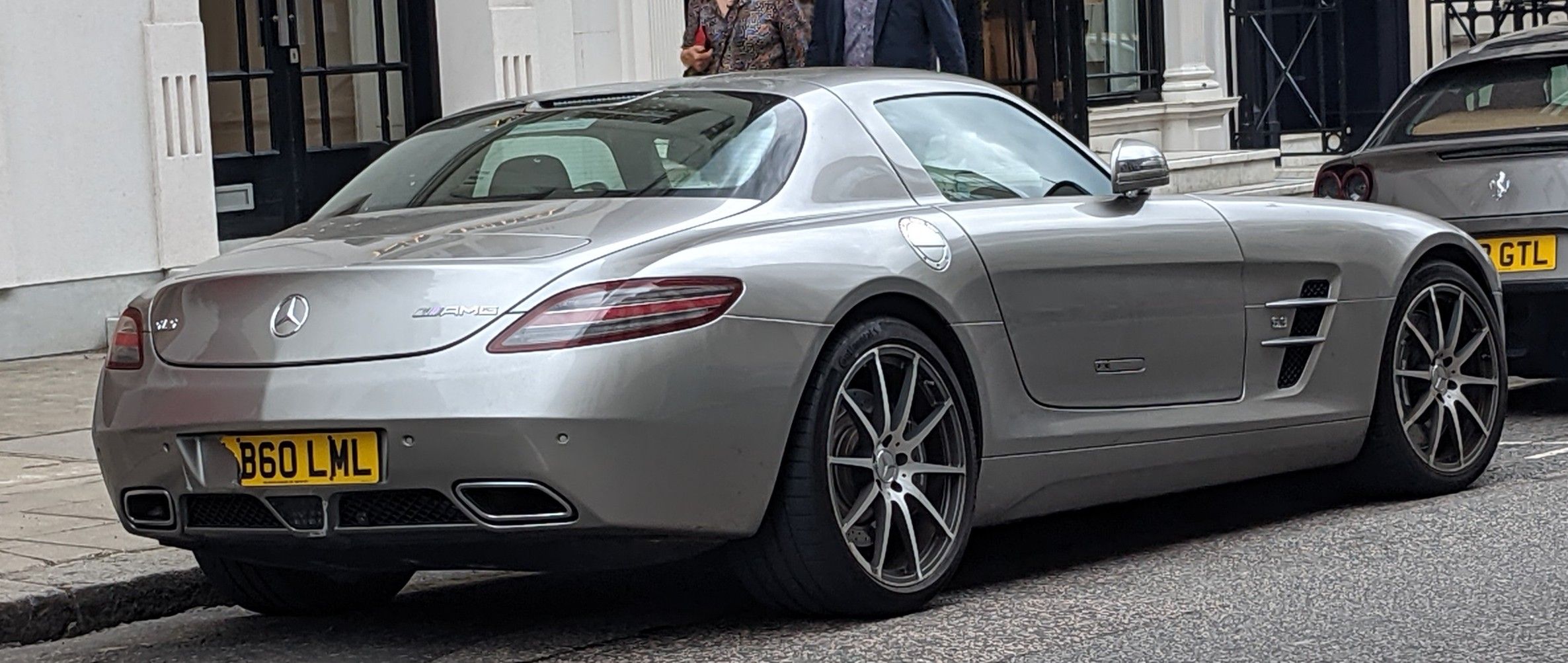
9. **Mercedes-Benz SLS AMG (2010–2015)**The Mercedes-Benz SLS AMG stands as a magnificent and deeply evocative spiritual successor to the legendary 300 SL, majestically reviving the iconic gullwing doors for a new generation of impassioned automotive enthusiasts. This breathtaking halo car, developed entirely in-house by the formidable AMG performance division, was a bold and unequivocal statement of Mercedes’ high-performance aspirations in the early 2010s, seamlessly blending a storied heritage with cutting-edge innovation to create a truly unforgettable and immensely desirable machine. Its dramatic, flowing lines and upward-opening doors instantly made it a head-turner, securing its place as an instant classic.
Beneath its striking, retro-futuristic bodywork, which pays homage to its illustrious predecessor, the SLS AMG housed a phenomenal, naturally aspirated 6.2-liter V8 engine. This handcrafted powerplant was a true masterpiece, a formidable force capable of producing up to an astounding 622 horsepower in its ultimate Black Series iteration, delivering an intoxicating, linear surge of power. This prodigious engine, combined with a host of advanced technologies, made the SLS an exhilarating, visceral force on any road or track, offering an unparalleled auditory and dynamic experience that only a naturally aspirated AMG V8 can provide.
More than just a performance vehicle, the SLS AMG was a technological tour de force, embodying an unwavering pursuit of engineering excellence and emotional, purposeful design. Crucially, it served as a vital platform for Mercedes to pioneer significant innovations in its performance models, including groundbreaking lightweight carbon-fiber construction and sophisticated, rapid-fire dual-clutch transmissions, pushing the very boundaries of what was achievable in a road-going sports car. Today, with its dramatic styling, spine-tingling exhaust note, and unparalleled provenance as an AMG-developed masterpiece, the SLS AMG is rightfully regarded as an undeniable modern classic with a rapidly growing collector appeal, cementing its legacy as one of the most exciting and influential Mercedes-Benz models of its era.
Car Model Information: 2022 Mitsubishi Outlander SE
Name: Mercedes-Benz SLS AMG
Manufacturer: Mercedes-AMG
Production: January 2010–2014
ModelYears: 2010–2015
Assembly: Sindelfingen
Designer: Mark Fetherston (2007)
Class: Sports car
BodyStyle: coupe
Layout: Front mid-engine, rear-wheel-drive layout,all-wheel drive
Engine: Mercedes-Benz M156 engine#M159,V8 engine
Transmission: dual-clutch,automatic transmission
Wheelbase: 2680 mm
Abbr: on
Length: 4638 mm
Width: 1939 mm
Height: 1252 mm
Weight: {{convert,1619,kg,lb,0,abbr=on
Predecessor: Mercedes-Benz SLR McLaren
Doors: Gull-wing door
Categories: All articles needing additional references, All articles with bare URLs for citations, Articles needing additional references from November 2018, Articles with bare URLs for citations from August 2022, Articles with hAudio microformats
Summary: The Mercedes-Benz SLS AMG (C197 / R197) is a front mid-engine, 2-seater, limited production sports car developed by the Mercedes-AMG division of German automotive manufacturer Mercedes-Benz, with the assistance of David Coulthard. The car is the successor to the Mercedes-Benz SLR McLaren. SLS stands for “Super Leicht Sport” (Super Light Sport).
The SLS was the first Mercedes-Benz automobile designed and built from scratch entirely by AMG. Upon its introduction at the 2009 Frankfurt Motor Show, the SLS AMG’s 420 kW; 563 hp (571 PS) M159 engine was according to AMG “the world’s most powerful naturally aspirated production series engine” ever produced.
An electric version of the car, the SLS AMG Electric Drive, was presented at the 2012 Paris Motor Show. Production ended in 2014 with the introduction of the SLS AMG GT Final Edition.
As compared to its predecessor (the SLR McLaren), the SLS is per Mercedes-AMG head Tobias Moers, the faster car on the track, both in the hands of normal drivers as well as race car drivers. The Mercedes-McLaren SLR came in at 1,750 kg (3,858 lb). The SLS, however, has a curb weight of 1,619 kg (3,569 lb) when equipped with the standard wheels.
Get more information about: Mercedes-Benz SLS AMG
Buying a high-performing used car >>>
Brand: Mercedes-Benz Model: SLS AMG
Price: $18,409 Mileage: 57,702 mi.
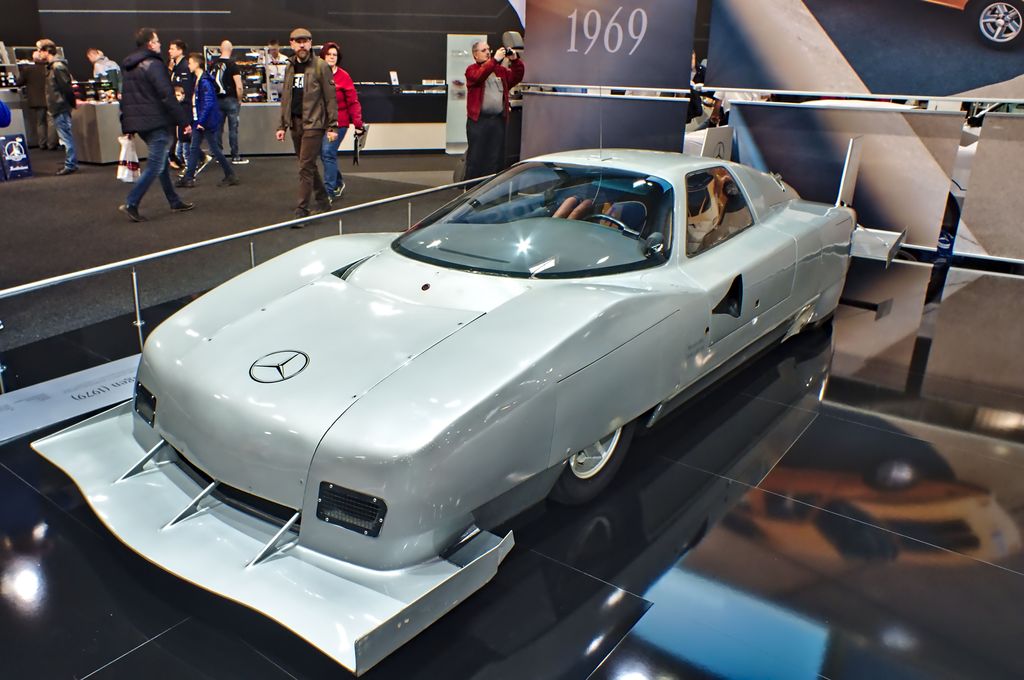
10. **Mercedes-Benz C111 (Concept, 1969–1979)**While never destined for public sale, the Mercedes-Benz C111 concept series carved an indelible and profoundly influential mark in automotive history, showcasing the brand’s incredibly bold, visionary, and utterly forward-thinking approach to innovation. This series of experimental vehicles, spanning a groundbreaking decade from 1969 to 1979, was not merely about the logistics of mass production; it represented a relentless and ambitious exploration into the future of automotive propulsion, safety, and design, fearlessly pushing the very boundaries of what was then considered even remotely possible in an automobile.
The C111 models were a vibrant, high-stakes testbed for an astonishing variety of groundbreaking powerplants, demonstrating Mercedes-Benz’s engineering audacity. These included the incredibly smooth and compact Wankel rotary engines, which were still a nascent technology, as well as highly efficient turbodiesels, and even ventured into the esoteric realm of solar power research and development. Beyond their diverse and experimental engine offerings, these cars featured a dramatic, instantly recognizable wedge-shaped silhouette and, most famously, the triumphant return of the iconic gullwing doors, instantly imbuing them with a legendary and futuristic status that resonated across the globe. This striking design was not just for aesthetic appeal; it embodied a relentless, scientific pursuit of aerodynamic efficiency and cutting-edge aesthetics.
Despite ultimately remaining a concept, the C111’s profound and far-reaching influence on future Mercedes engineering and design simply cannot be overstated. It stood as a brilliant beacon of innovation, loudly demonstrating the company’s unwavering commitment to pushing technological envelopes and, in doing so, inspiring generations of engineers and designers to dream bigger and bolder. The C111 truly remains one of the most fascinating, audacious, and visionary chapters in the illustrious history of Mercedes-Benz, a timeless testament to the power of unbridled experimental spirit and a relentless drive for automotive progress.
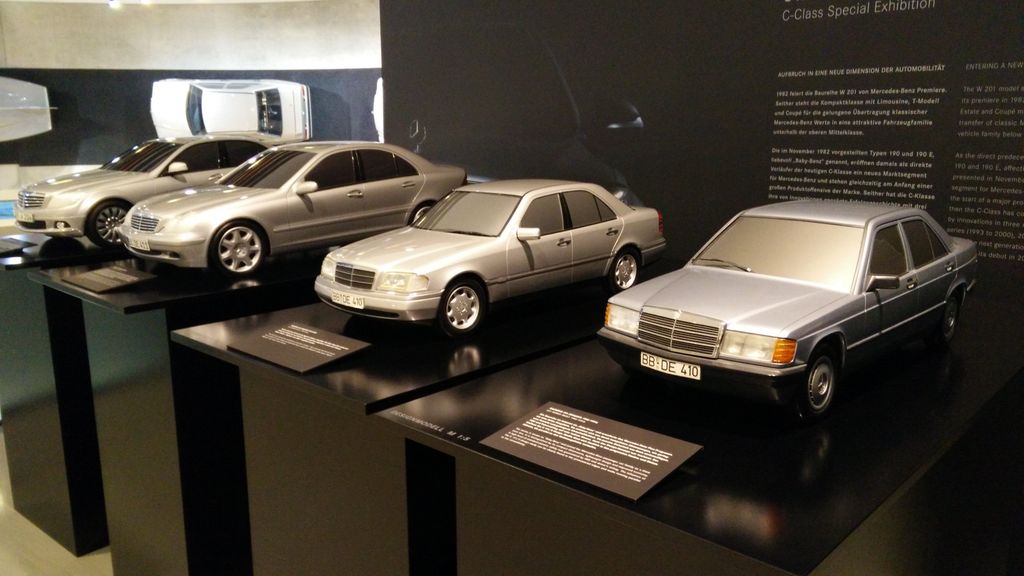
11. **Mercedes-Benz C-Class (1993 to 2024)**Before the undeniable ubiquity and widespread appeal of the A-Class, the Mercedes-Benz C-Class proudly and consistently held the coveted title of the brand’s best-selling model, establishing itself as the quintessential compact executive sedan. This enduring success story, marked by continuous evolution and refinement, traces its profound roots back to the pioneering W201 190 E compact sedan. That groundbreaking vehicle was one Mercedes-Benz strategically introduced in direct response to evolving market demands and increasingly stringent regulatory pressures, most notably the Clean Air Act in the United States, proving the brand’s adaptability. The C-Class, however, truly matured into its own distinct, hugely popular, and globally influential line from 1993 onwards.
The C-Class has, with remarkable consistency, delivered a genuine and uncompromised Mercedes experience, even within its more compact and agile form, thanks to its steadfast and unwavering commitment to a traditional rear-wheel-drive platform. This fundamental engineering choice provides drivers with the engaging dynamics, precise handling, and balanced feel that truly define the brand, making it a beloved and aspirational choice for those seeking a premium, sophisticated feel without necessarily requiring the larger footprint of an E-Class or S-Class. It has consistently blended agile, communicative handling with the unmistakable comfort, impeccable build quality, and serene refinement synonymous with the Mercedes-Benz star.
Across its numerous, highly successful generations, the C-Class has skillfully and strategically adopted many of the high-tech features, cutting-edge safety innovations, and luxury appointments first introduced in its flagship S-Class siblings, presenting them in a more accessible and widely appealing package. This astute evolutionary strategy has allowed it to maintain its formidable position as a highly sought-after and perennially popular model, offering a compelling, comprehensive blend of luxury, dynamic performance, and advanced technology to an incredibly broad customer base. Its ongoing success unequivocally proves that even in a more compact and approachable package, the Mercedes star shines with undiminished brilliance and prestige.
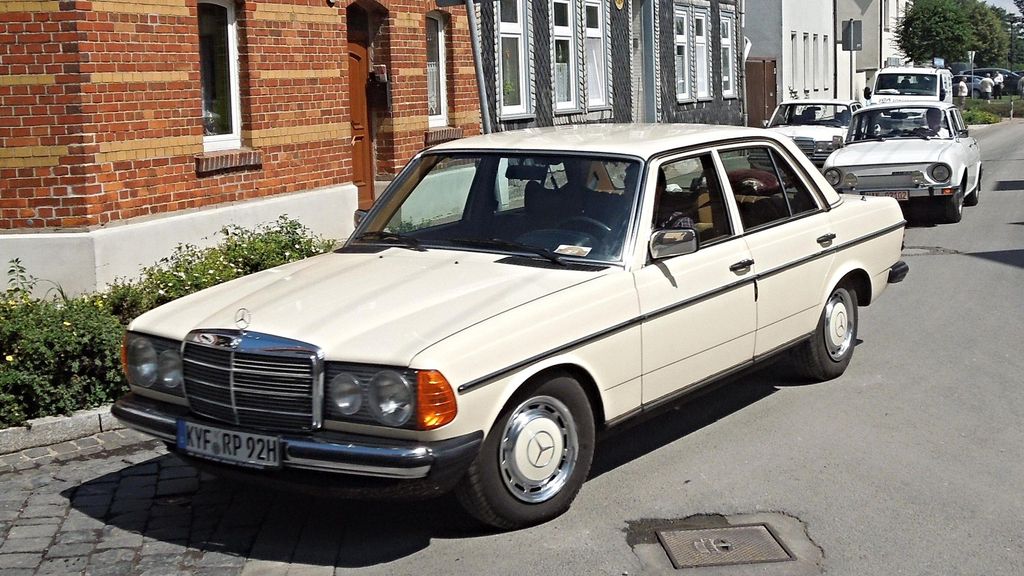
12. **Mercedes-Benz W123 Series (1975 to 1986)**The Mercedes-Benz W123 series, produced between the pivotal years of 1975 and 1986, holds an almost mythical and universally celebrated status among automotive enthusiasts and seasoned professionals alike. It is, with virtually no argument, widely regarded as arguably the most durable and exceptionally reliable automotive platform ever conceived and brought to fruition by any manufacturer. These robust sedans, undeniably elegant coupes, and remarkably practical wagons rapidly became synonymous with an unparalleled trifecta of extraordinary longevity, uncompromising quality, and an air of understated, enduring luxury, truly embodying the absolute pinnacle of German engineering prowess during its defining era.
Available in a rich multitude of configurations, including the iconic sedan, the sleek and stylish coupe, and the immensely practical and versatile wagon, the W123 series offered a sophisticated and exquisitely engineered solution for every discerning driver and every conceivable need. Its diverse range of engine options, spanning from incredibly efficient four-cylinder diesel powerplants to smooth and powerful inline-six petrol variants, were each meticulously designed with an almost obsessive attention to mechanical durability and robust performance. The legendary diesel models, in particular, achieved a hallowed status for their almost unbelievable reliability, with countless W123 diesel vehicles famously documented to exceed an astonishing one million miles with only minimal major repairs, a profound and undeniable testament to their virtually indestructible engineering.
Beyond their remarkable and resilient engines, the W123’s structural integrity was, quite simply, legendary. These vehicles were robustly built to withstand the harshest environmental conditions and the rigors of relentless daily use. Its body featured high-quality steel construction fortified with comprehensive rust protection, a significant and forward-thinking innovation for its time, ensuring its longevity in diverse climates. Every single component was designed and engineered with an ethos of “over-design,” consciously prioritizing long-term performance and an almost infallible reliability. Furthermore, these vehicles were pioneers in numerous safety innovations, incorporating advanced crumple zones and robust side-impact protection, which collectively set new industry standards for passenger security. Even today, many decades after rolling off the production line, numerous W123 interiors remain in remarkably good condition, a testament to their premium materials and timeless craftsmanship, making them highly sought-after classics that effortlessly transcend mere temporal boundaries.
Car Model Information: 2022 Mitsubishi Outlander SE
Caption: 1984 Mercedes-Benz 280 E (W123)
Name: Mercedes-Benz W123
Manufacturer: Daimler-Benz
Related: Mercedes-Benz E-Class
Production: November 1975 – January 1986 , 2,696,915 built , 4-door: 2,375,410, Coupé: 99,884 , Estate: 199,517 , Limousine: 13,700 , Chassis: 1,353 , LWB chassis: 7,020
Predecessor: Mercedes-Benz W114
Successor: Mercedes-Benz W124
Class: Executive car
Layout: FR layout
BodyStyle: sedan (car)
Engine: ubl
Transmission: 722.0 722.1 722.2
Wheelbase: 2795 mm
Abbr: on
Length: 4725 mm
Width: 1784 mm
Height: 1435 mm
Weight: convert
Assembly: Sindelfingen,East London, Eastern Cape,Changchun,Samut Prakarn,TAAP,Thonburi Automotive Assembly Plant Co., Ltd.
Designer: Friedrich Geiger,Bruno Sacco
ModelYears: 1976–1986
Categories: 1980s cars, Articles with short description, CS1: long volume value, CS1 German-language sources (de), CS1 interwiki-linked names
Summary: The Mercedes-Benz W123 is a range of executive cars produced by German manufacturer Mercedes-Benz from November 1975 to January 1986. The W123 models surpassed their predecessor, the Mercedes-Benz W114, as the most successful Mercedes-Benz, selling 2.7 million units before production ended in the autumn of 1985 for the saloon/sedan versions and January 1986 for coupés and estates/station wagons.
Following a slow production build-up during the first year, customers who placed their orders faced a lengthy waiting period of nine to twelve months. A black market emerged for the customers who were willing to pay more for immediate delivery. The slightly used W123 commanded about 5,000 Deutsche Mark premium over its original sale price.
Like its predecessors, the W123 gained the reputation of being well built and reliable. Many taxi companies in Germany chose the W123 due to its reputation of durability and reliability. Reaching 500,000 or more kilometres with only minor mechanical issues was common with W123 used as taxicabs. Once the W123 reached the end of its service life, they were often shipped to Africa and third world countries where they were highly esteemed for their ability to travel on rough roads and to require infrequent maintenance.
W123 production ended in January 1986 with 63 final estates/station wagons rolling out. The most popular single models were the 240 D (455,000 built), the 230 E (442,000 built), and the 200 D (378,000 built).
Get more information about: Mercedes-Benz W123
Buying a high-performing used car >>>
Brand: Mercedes-Benz Model: W123 Series
Price: $18,409 Mileage: 57,702 mi.
From groundbreaking innovations that profoundly reshaped the entire automotive industry to timeless designs that continue to inspire awe and admiration, these twelve Mercedes-Benz models are far more than just mere vehicles. They stand as vivid, tangible testaments to over a century of unwavering commitment to engineering excellence, each one a vital and compelling chapter in an extraordinary saga of automotive artistry, technological leadership, and unparalleled engineering prowess. Whether boldly pushing the very boundaries of performance, luxuriously redefining the concept of automotive comfort, or setting new, enduring standards for uncompromising durability, these legends collectively embody the indomitable spirit of a brand that has consistently driven the world of automobiles forward, leaving an indelible and inspiring mark that continues to resonate powerfully with drivers, collectors, and dreamers across the globe.


